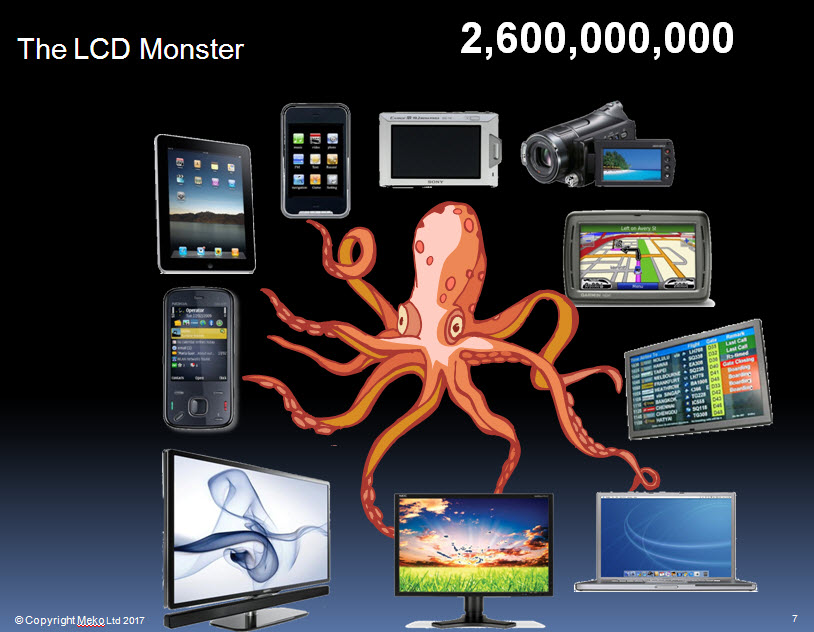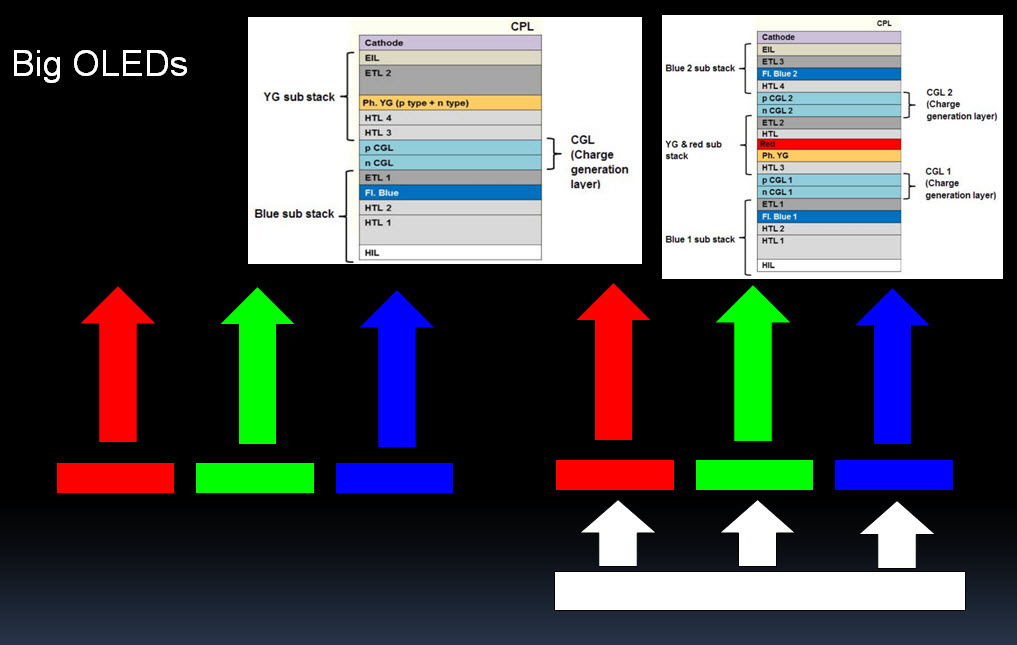The next speaker was our own Bob Raikes. His topic was the development of the OLED business and its impact on LCD. He started with a broad overview. The development of flat panels was driven by notebooks, the ‘killer app’, then monitors and TVs as panels got cheaper and now mobile devices are also a huge market. As he said in his talk in 2015, there is now a device to fit every size of display from wearables to TVs.
He showed the graphic of an octopus, which he has been calling the “LCD monster” since 2002. Adding up all the TFT LCDs and you now get to around 2.6 billion per year. Now, with OLED developing, as LG and Samsung try to get away from the challenge coming from China, one or two tentacles are moving to OLED, the wearable and smartphone segments and there is some penetration in tablets.
 LCD remains the ‘monster’, but two tentacles, for smartphones and wearables, will go to OLED.
LCD remains the ‘monster’, but two tentacles, for smartphones and wearables, will go to OLED.
However, OLED is still struggling with some long term issues. Blue materials remain a problem, transistor configurations are much more high quality and complex than is needed for LCD and encapsulation, while now functional, is expensive. Further, there is no proven way to deposit RGB OLED materials on large substrates. As a result, the large OLEDs from LG use an inefficient system based on colour filters. When it is hard to make a very bright OLED without degrading the materials, it’s a shame to throw away most of the light. Although LG’s system of using a white OLED is sometimes described as simple, the reality is that in 2016, 19 different layers were used to create that white OLED (and PK noted that there are now 22 layers!)
 Although the LG ‘OLED by white’ is often described as simple, there are 19 layers in the stack, according to IHS in the 2016 architecture!
Although the LG ‘OLED by white’ is often described as simple, there are 19 layers in the stack, according to IHS in the 2016 architecture!
Raikes then explained the ideas behind QD LCDs and how there is a move to develop colour conversion layers using Quantum Dots, rather than using filters. This approach could also be used for OLEDs. Further, there is work going on with TADF materials to improve emission. In the longer term, makers are looking to replace the organic materials in OLEDs with quantum dot-based materials to give longer life.
Finally, Raikes introduced the idea of MicroLED, which some see as a potentially disruptive technology. However, the approach is challenging, not least because if the pixels are small enough, some of the optics issues are quite different than for larger light sources, and optics can be slow to develop.
In questions about the development of OLED against LCD, Raikes said that the main thing was to ‘follow the money’. Although there are technologies that might disrupt LCD for large display applications in notebooks, monitors and TVs, the reality is that so much investment has already gone into LCD and is committed to LCD, that it would be hard for any other technology to make a significant impact on the volume of LCD in the short to medium term. However, smartphones and wearables will become the dominant province for OLED.

